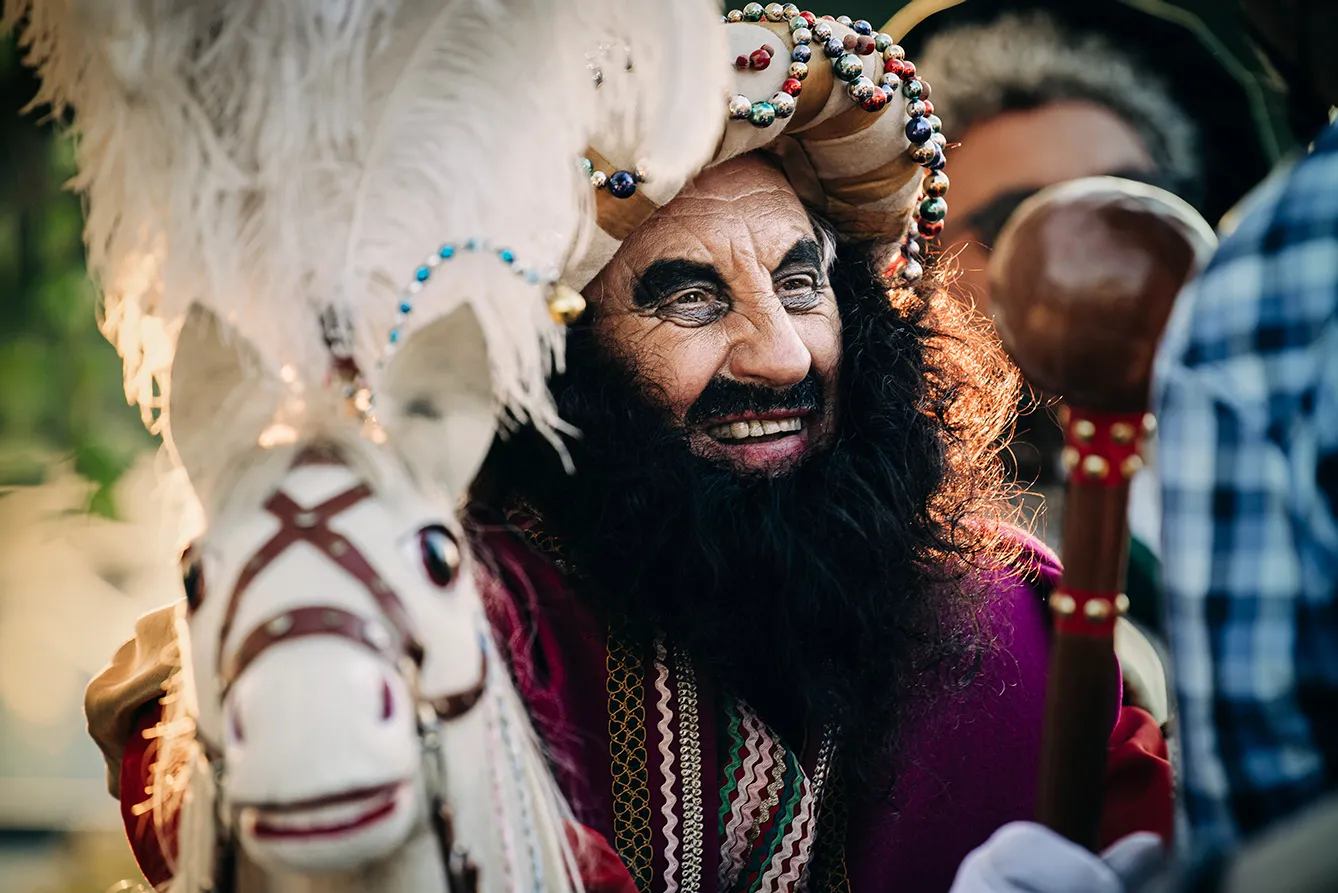Many first-time visitors to Cracow may be surprised that the city’s most exposed and revered symbol is not the famous dragon. In fact, it is a Mongolian man on a hobby horse, sometimes with a baton in his hand. Lajkonik, as the iconic hobby horse rider is named in Polish, is actually a choice with strong cultural and historical roots.
Mongolian raids or Tatar raids?
In the 13th century, the Mongolian army was moving swiftly west and reached the territory of Poland. Cracow was on its way and fell under siege by the attackers. The war is called the Mongol Invasion of Poland, which may be a little confusing at first. You see, Tatars were one of the tribes living in the Mongolian lands. And although they joined in the wars against Western dominions, they varied in looks, culture, and religion (Tatars became Muslims).
That’s why you may sometimes encounter the raiders collectively called Tatars. You can easily leave the historical expertise to the historians and simply remember that the Mongolian army invaded Poland and reached Cracow in 1287. That’s where the legend of Lajkonik begins.
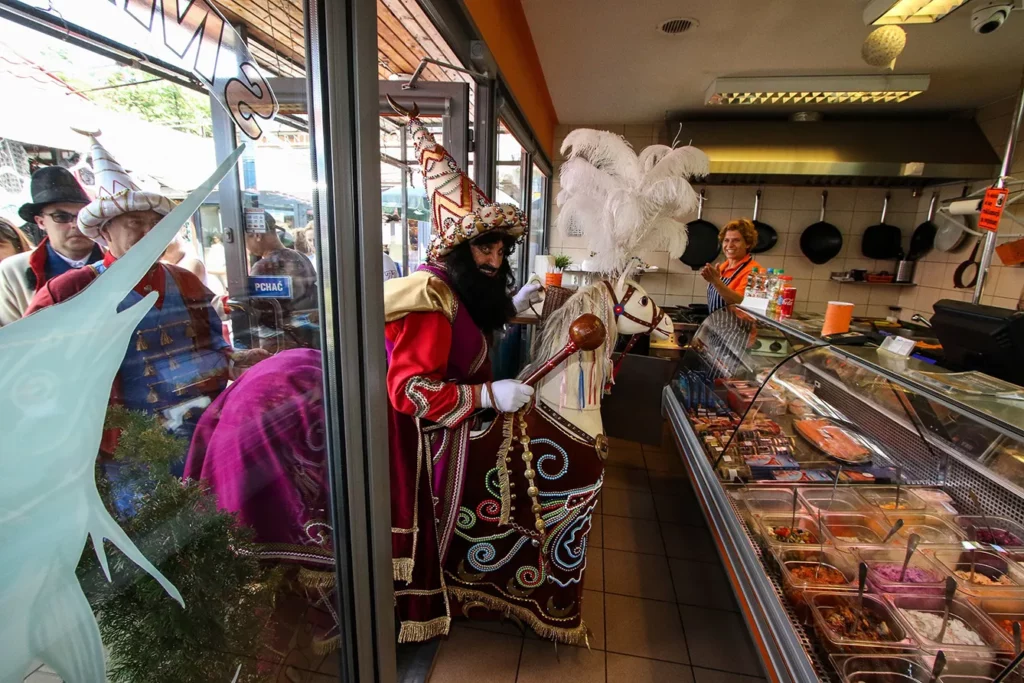
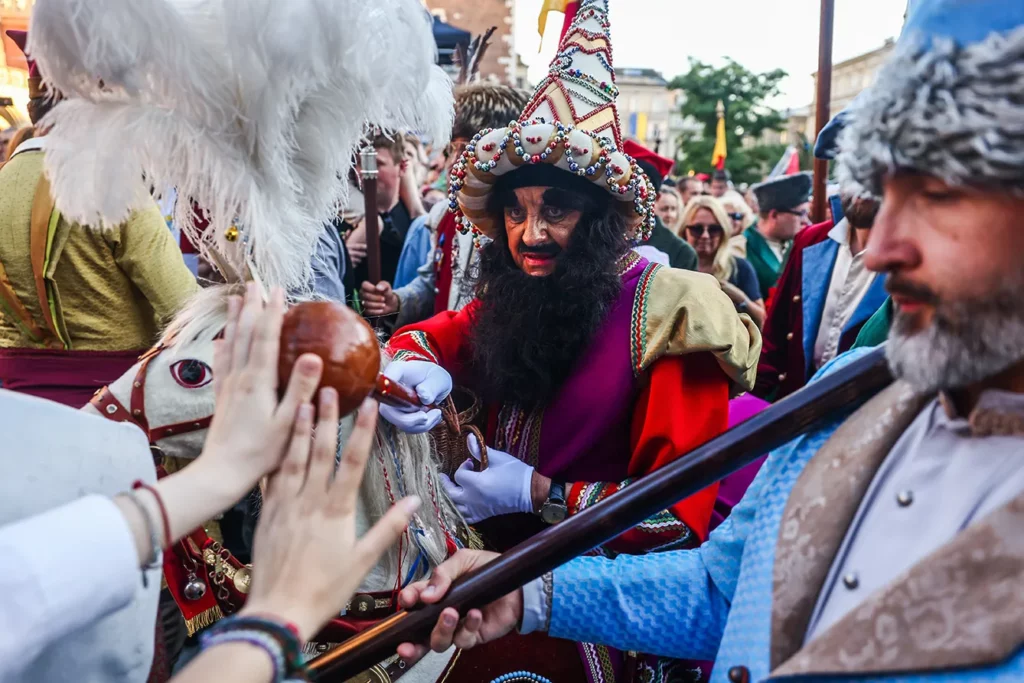
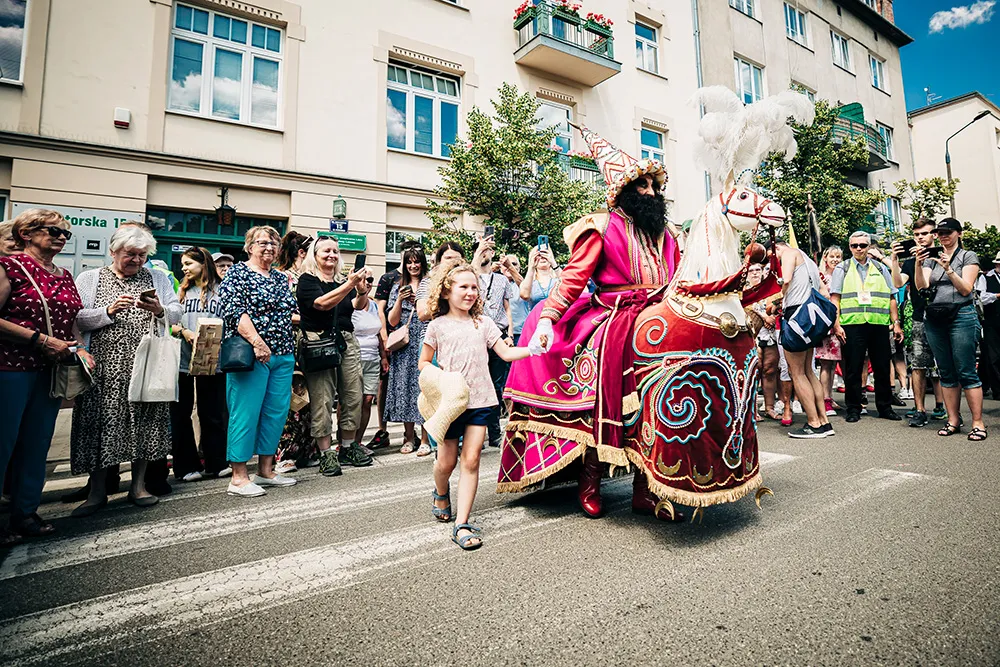
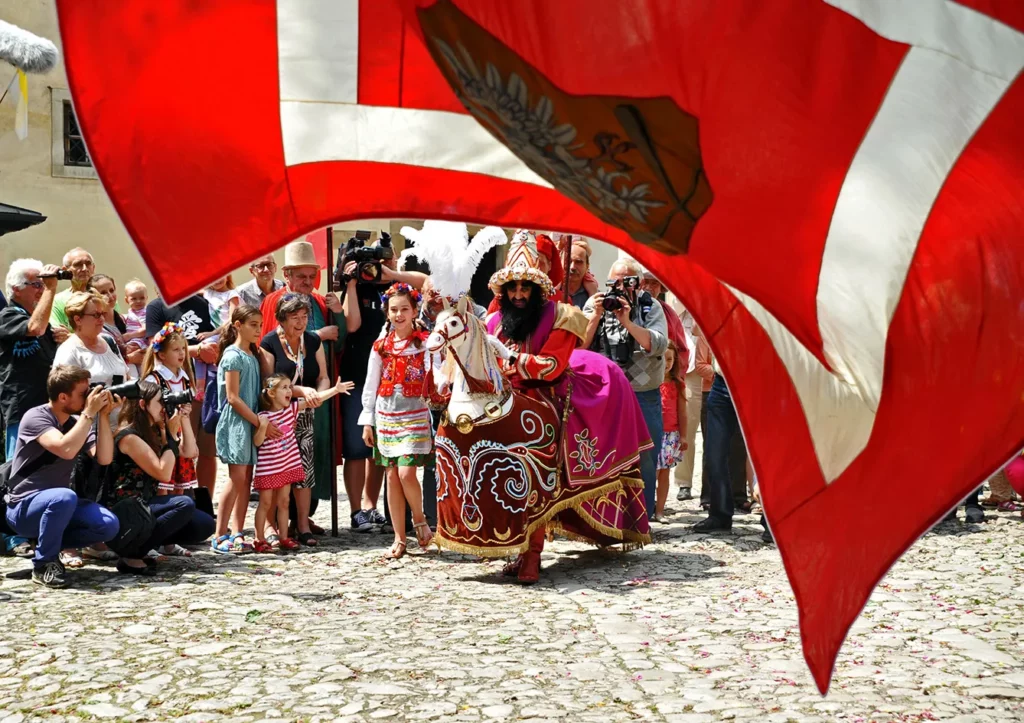
Best to never sleep on a job
The Tatars moved close towards Cracow, but the night was about to fall. As they did not want to fight at night, they stopped at the village of Zwierzyniec (today’s district of Cracow). They kept guard for a while. However, in the end, they all fell asleep. Since the settlement was located close to the Vistula River, it was the dwelling of the local raftsmen, known as włócznicy (the wanderers).
They noticed the presence of the enemy, and armed with their paddles, they attacked the sleeping hordes of Tatars, defeating the enemy. They took their clothes as trophies of war and decided to play a prank on the Cracovians. In the morning, they entered the city dressed up as the Tatars. The people held their breaths but soon realized that the dancing crowd was their brothers, celebrating the victory over the careless raiders.
True or false Lajkonik
According to some historians, the above legend is a rather possible origin of the tradition of the Lajkonik pageant. The pageant is held on the first Thursday after Corpus Christi. It is precisely the time of year when the event is held that points to its possible origins as an inspiration for the battle of Ołomuniec in 1241, which fell around the time of Corpus Christi. What does the pageant look like? Lajkonik has a long route ahead of him, making a few pit stops here and there (ok, a lot of pit stops). He usually sets out about noon and arrives at his destination – the market square, where he is set to meet with the mayor – around 7 pm.
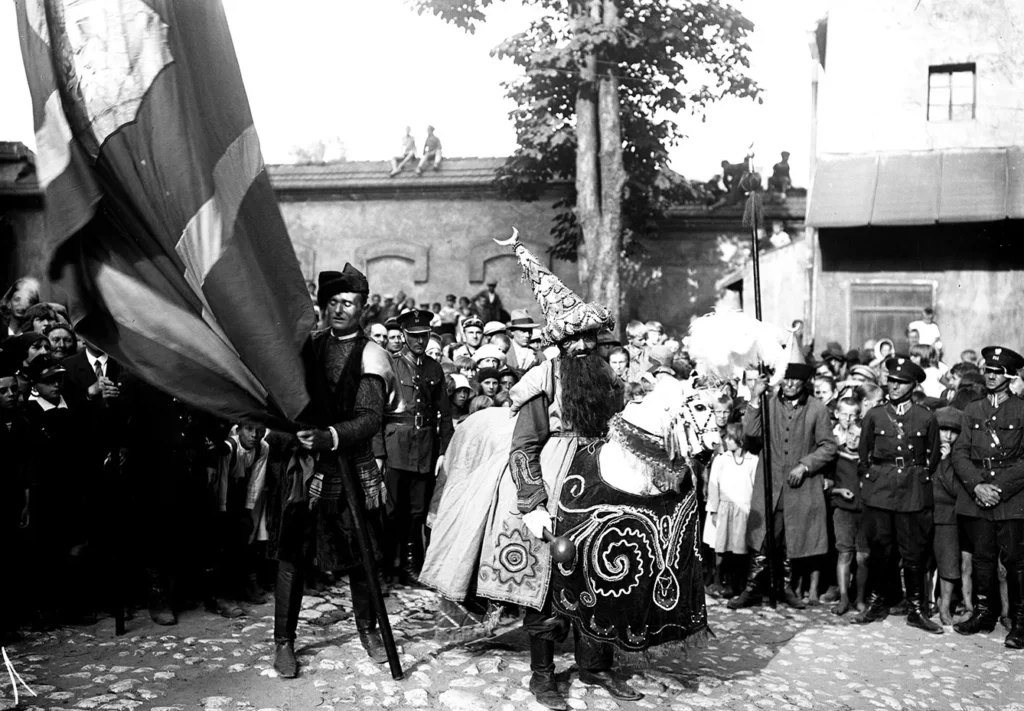
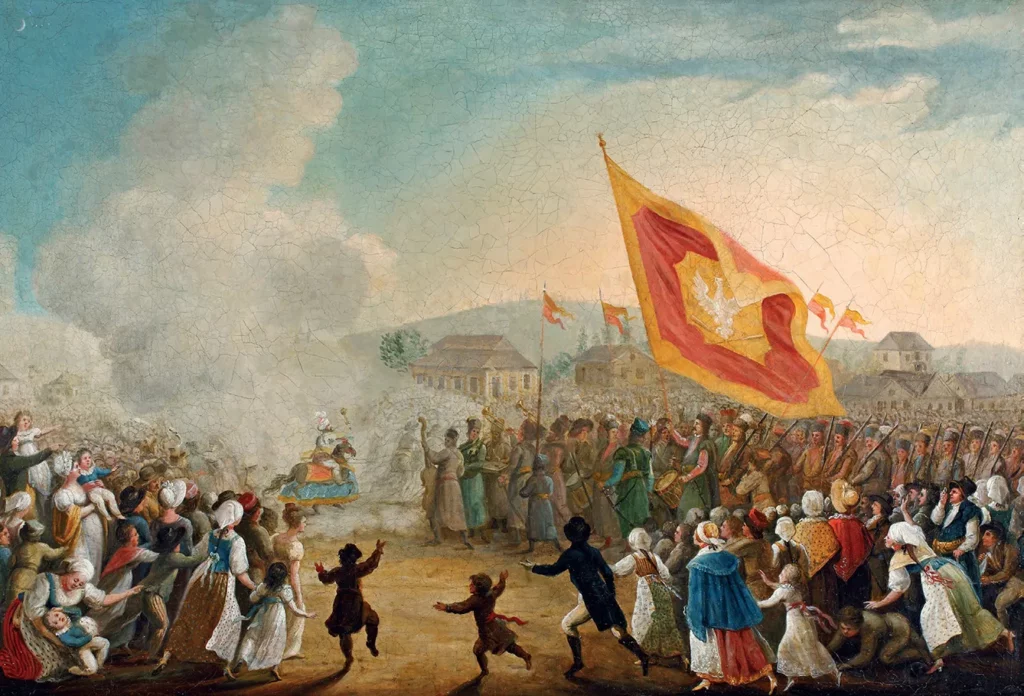
On the way, there is a lot of dancing and merrymaking. Lajkonik sometimes hits the spectators playfully with this baton, which is considered good luck. He ‘raids’ the local shops asking for ransom in the form of food or ‘spirited beverages.’ The mayor pays the main ransom, who hands the merry prankster a pile of money and a chalice. Craocow, once again, can sleep peacefully and expect a whole year of prosperity. Hooray!
Traits of the greatest
Today’s Lajkonik outfit also deserves mention. It is a true work of art as it was designed by one of the most prolific Polish artists – Stanisław Wyspiański, strongly connected with Cracow – in 1909. The contrasting, embroidered red robes look magnificent, and who knows, perhaps the image Wyspiański gave the Lajkonik made him so famous? After all, apart from the many stalls where you can find dozens of Made-in-China, soulless dragons – Lajkonik is the symbol chosen to decorate Cracovian trams, is picked by businesses for their logo, and even a name (for example, a chain of Lajkonik bakeries and Poland’s Lajkonik manufacturers of savory snacks).
And the funniest thing of all? The people who served as the original inspiration for the whole game came from abroad and wanted to raid the city. It is highly possible that only Poles can turn the image of their once-feared enemy into a mascot and international symbol of the very town they wanted to plunder.


